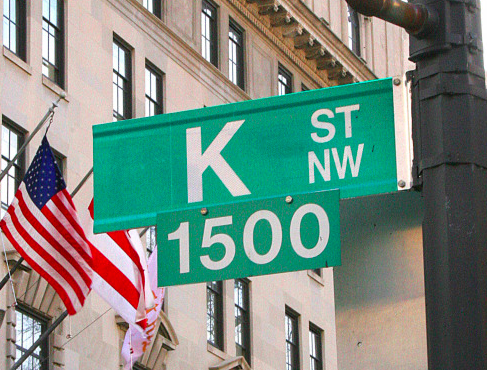Why does the lobbyist cross the road? Because there’s tons of money over there.
Policy advocacy is mysterious and complex, but has very high returns.
I made a stupid mistake as I was going through customs at the US border years ago. The customs agent asked me what I did for a living.
“I’m a lobbyist,” I answered.
His eyes narrowed and his face took a hard look.
“Can you step this way please?….”
I’d been over this border crossing many times, but this was the first time I got pulled aside for an extensive search of my luggage. I can’t imagine what they were looking for; I only had a shoulder bag. I lost an hour of my life waiting to be searched, but learned an important lesson: outside of Washington, no one likes lobbyists.

It’s a profession in ill repute, understandably. People have a sense that lobbyists try to skew the system unfairly in favor of their clients. But if the public doesn’t like lobbyists, it’s also because the public also believes they’re effective in what they do, i.e. influencing regular political and policy process.
Is this true? The field of study on lobbying effectiveness is somewhat thin, but the best evidence is that it is true—actually, very true.
Into my hands last week came an interesting paper out of the National Bureau of Economic Research, “Advancing the Empirical Research on Lobbying,” which surveys the state of empirical knowledge and investigation of lobbying (h/t Nathan Huttner).
The paper reviews issues like data sources and methodologies to examine lobbying and it provides some broad understandings. Among other interesting bits:
–Lobbying expenditures are five times bigger than campaign contributions (election-related, including PACs, super-PACs, 527s, etc). Compare about $3.5 billion for lobbying to $750m for campaign contributions. (Also note these are US figures). Lobbying is much bigger, although campaign finance is more controversial and higher-profile as a form of influencing (or is it corrupting?) the political system.
–There are more business groups lobbying than citizen groups, and business groups spend a lot more (something like 80% of the total spend). Among businesses, mostly it’s big businesses (the biggest 10%) that do the lobbying. (See related Oxfam paper, Talking the Walk.) Citizen groups lobby on fewer issues, but are perceived to be disproportionately influential on those issues.
–In general, status quo policy is stable and resilient, but when change happens, it tends to be substantial. Most lobbying is in support of the status quo, i.e. beneficiaries of the system pay lobbyists to preserve current arrangements.
–When it comes to lobbying effectiveness, all study methods are suspect. There are many different methodologies, each with problems, but which can help examine different aspects of lobbying. For example, studies found that:
- For universities, lobbying has a significant positive impact (benefit) when the school’s legislator sits on the Congressional appropriations committee, but not if the legislator does not.
- Increasing a firm’s lobby expenditure by 1% results in lowering effective tax rates by 1% in the following year (which is a HUGE payoff). Also, lobbying over a longer time frame and on more pieces of legislation also reduces a firm’s tax rates.
- Lobbying by energy interest groups achieves very small shifts in policy and programs, but results in a 140% return on lobby investment.
–Little quality study has been undertaken on the comparative value of different advocacy instruments: lobbying, campaign contributions, grassroots organization, endorsements, media campaigns, etc.
The authors identify areas for future investigation and ask some big questions. The first and biggest question being: why isn’t the lobby industry much much bigger?
“…why do so few interest groups lobby? If lobbying is presumed to be so influential in appropriations and most policy domains, the empirical researchers must convincingly guide scholars to an answer of why approximately only 10% of firms lobby in practice and why they spend so little given the magnitude of potential benefits politicians could redirect towards interests that do lobby.”
Most papers suggest substantial returns to lobbying, and the stakes are very high. In fact, some of the returns seem farcically large, “comparable to the returns of the most blistering hedge fund.” One analysis by Thomas Edsall based on subsidies in federal programs shows the drug industry lobby producing a 77,500 percent return on investment, and oil company lobby generating 5,000 percent return. Even if these analyses are wrong by orders of magnitude, lobbying is a magnificent investment. These ROIs are so high that the implication is that a lot more money could be productively invested in lobbying and still deliver high returns to the investor. In the United States, the federal budget is about $3.5 trillion and lobbying represents only three to four billion dollars. That’s a dollar spent trying to leverage $1,000.
I admit that this kind of analysis is a bit self-serving. I am involved in a lot of campaigns and advocacy work that is tightly connected to lobby and conceptually similar, but I don’t do much actually lobbying these days, and am I’m not a registered lobbyist anymore.
But I take a broader point in this; there is a strong case that the non-profit sector generally, and advocates for poverty reduction in particular, ought to be ramping up their lobbying rather than treating it as a part-time hobby. The leverage offered by lobbying means it’s practically irresponsible not to at least consider it as a serious focus. We owe it to our public mission to fight just as hard to influence policy as our competitors in other sectors do.
Even if like that customs agent, we might share the public distaste for lobbyists.